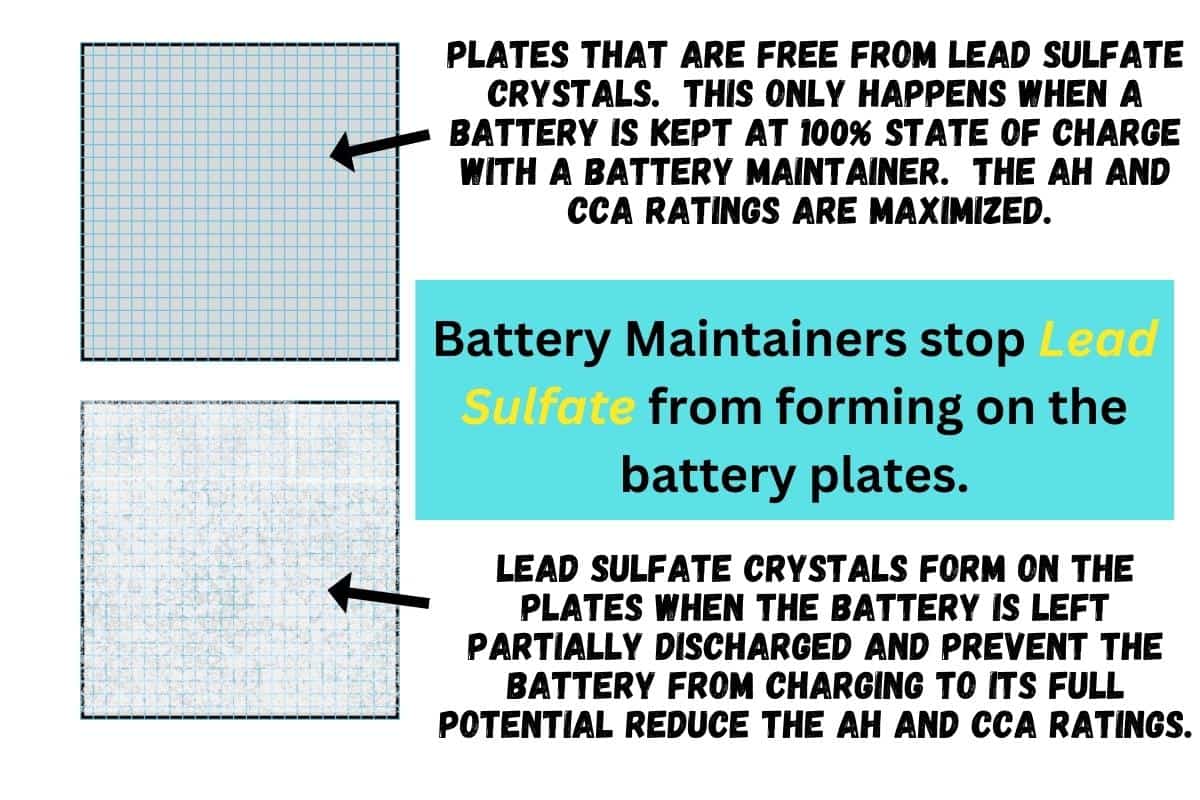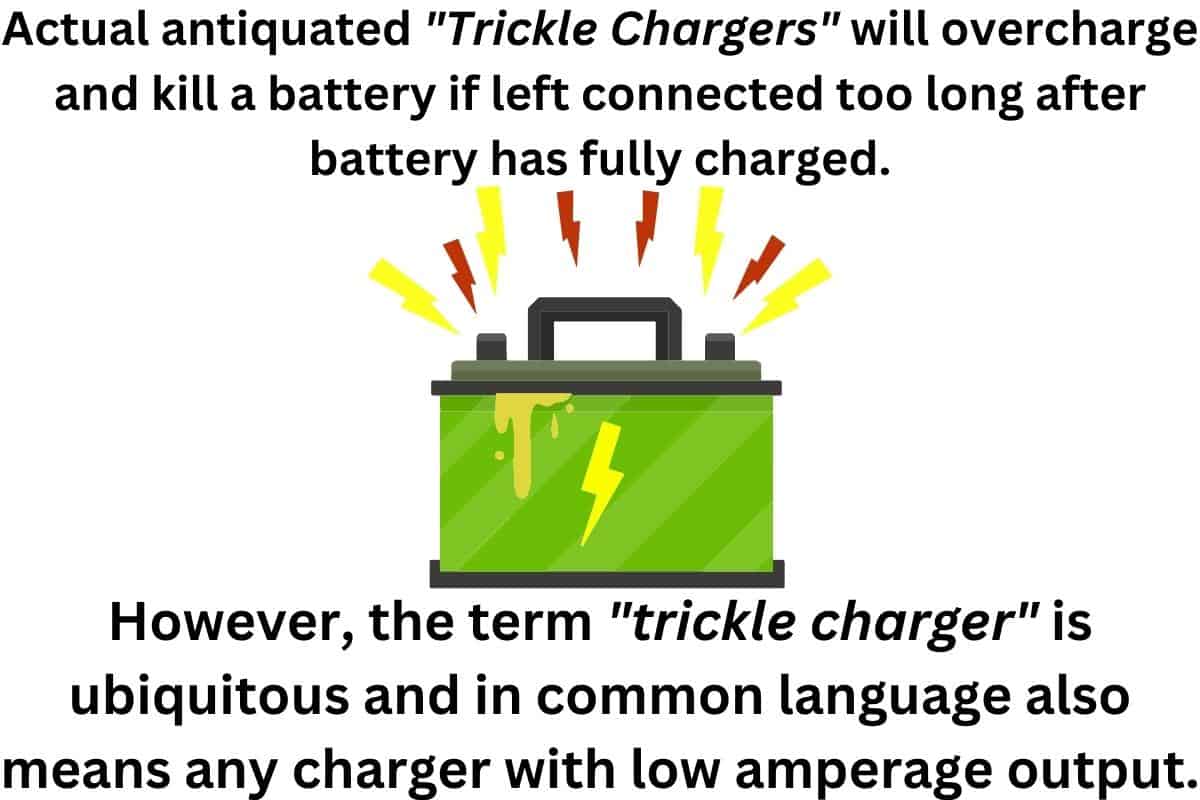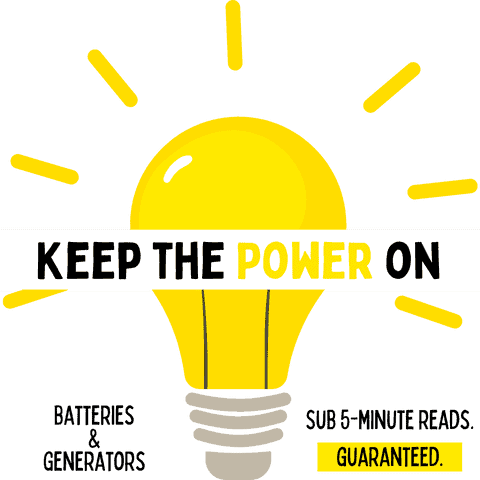Sometimes we need to charge a battery to put it straight to use again, and sometimes we just need to make sure a battery is ready to go several months in the future. Leaving a battery charger hooked up and plugged in long after the battery has reached 100% state of charge always begs the question of whether or not it is safe to do so.
Let’s jump right in and get you on your way!
Will a Battery Maintainer Overcharge a Battery?
Most modern battery chargers that have a maintainer feature are microprocessor controlled and will be completely safe to leave hooked up to your battery indefinitely without overcharging your battery.
Some chargers will hold actively hold a battery at 100% without overcharging, and some will enter into a standby mode when the battery reaches 100% and then turn on again temporarily when the battery naturally self-discharges and drops below a set threshold.
Think of it like blowing up a balloon to 100% of its capacity without popping it.
Some maintainers will function as though you’re keeping the balloon pressed to your lips without pinching the balloon off. To do this, you have to maintain the correct pressure with your lungs. You will need to exactly match the pressure of the balloon trying to deflate but not exceed it or else you’ll overfill the balloon and pop it.

Some maintainers will function as though you pinched off the balloon with your fingers and will take a break for a bit. When they notice the balloon has leaked a percentage or two of air, they will resume filling the balloon until it maxes out and then they’ll pinch it off and take a break again.
I personally prefer a battery maintainer from Deltran (Amazon), and they sell their products under the name “Battery Tender®”. These will actively keep the battery at 100% without overcharging. I have left these hooked up for months on end and my charge is always 100% and I have had zero problems.
The problem that I’ve had from other brands that go into a standby mode and then engage when the battery’s charge drops is that sometimes they’ll time themselves out. I’m not sure if they do this after a certain number of cycles, or if they just experience a glitch and don’t kick on, but it’s annoying to experience — especially if you haven’t checked on the status of the battery for a few months.
This happened very recently on my emergency battery bank. I left my system hooked up to a Duracell 7.5-amp charger (discontinued now from Duracell, but the exact model seems to be now branded under X2Power).
All was well for a few weeks and then it became out of site, out of mind. When I checked on it months later, the battery bank was illuminating my digital voltmeter which will sip away at the battery, but the charger was completely unresponsive until I unplugged and plugged it back in. My battery voltage had dropped to 12.1 (50%) and took a day to fully recharge (I needed to replace at least 100Ah).
In that time, I’m sure my battery’s plates have sulfated quite a bit from being in a state of partial discharge for several months. This sulfation will reduce the capacity of the battery, as well as inhibit its ability to receive and give off a charge.
How Long Will a Battery Last on a Maintainer?
In theory, a battery will last indefinitely on a quality battery maintainer. The job of a maintainer is to keep the battery at 100% state of charge without overcharging (which will deplete electrolyte or cause problems in it especially with Gel batteries).
Keeping the battery at a 100% state of charge will not allow lead sulfate to form on the plates which is the leading cause of the degradation of a battery. Lead sulfate will only form on plates if the battery is not at 100% state of charge.
Even though a battery will be fine if left connected to a maintainer for an extended period of time, it is still recommended to periodically check your battery and the charger to verify that there are no issues. I try to make a habit of checking mine once a month, but sometimes I fall short.
Will a Trickle Charger Overcharge a Battery?
A quality, modern maintainer will not overcharge a battery. These maintainers are designed to keep a battery at 100% state of charge without going over. Antiquated trickle chargers, which do not stop charging a battery when it reaches 100% will overcharge and kill a battery if not removed in time.
Your battery maintainer’s manual should clearly indicate that your maintainer can be left connected to the battery. If you see anything that says to “disconnect charger after the charging cycle has completed”, or “remove charger terminals when the charging process has finished”, then you likely have a standard charger or an “old school” trickle charger.
These antiquated trickle chargers may have a low amperage and seem harmless to leave connected, but they continuously keep pumping the battery with that low current even though the battery can no longer accept it.

Remember that a battery is simply converting electrical energy into stored chemical energy. Once the chemical reactions are done and the battery is at 100% state of charge, any additional current is simply “overcharging” the battery.
You’re not gaining anything from it. In fact, you’re losing battery capacity the longer you leave it in that state.
The excess current will overheat your battery and will start to boil out the electrolyte from your battery. Once electrolyte levels drop, sulfation will start to corrode the battery plates, and any plates that are exposed to air by evaporating electrolyte levels will be permanently damaged.
A 2-amp trickle charger (not a maintainer) or even less can easily damage or kill a battery if left connected for weeks and months.
